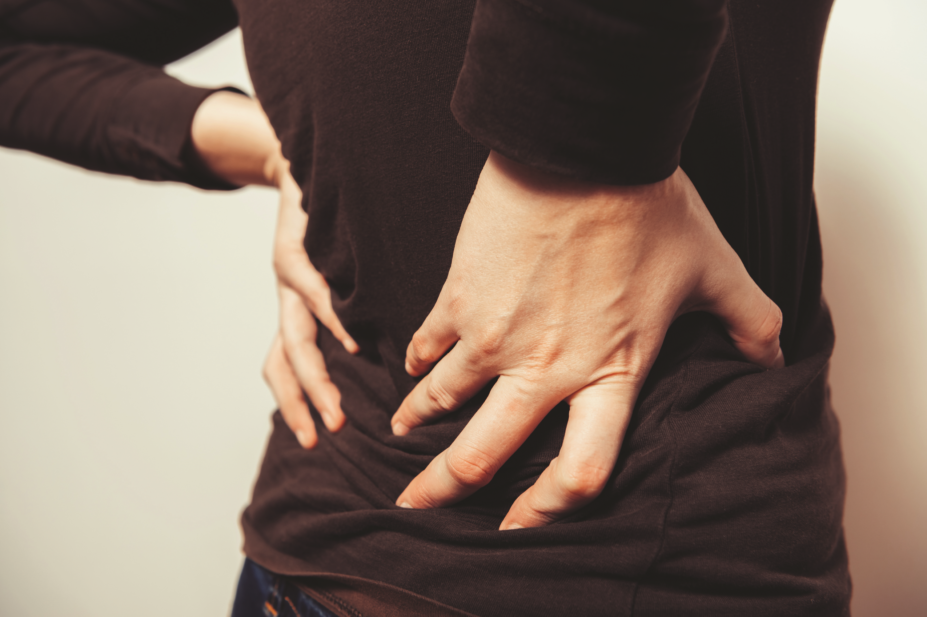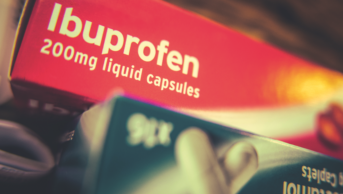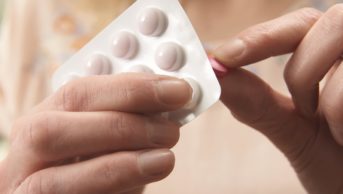
Shutterstock.com
Non-steroidal anti-inflammatory drugs (NSAIDs) seem to offer no real benefit over placebo in relieving back pain, a systematic review suggests.
NSAIDs, such as ibuprofen, were found to be effective for spinal pain, but the treatment effects were small compared with placebo and “arguably not clinically important”, the analysis of 35 randomised controlled trials involving 6,000 people showed.
For every six patients treated with NSAIDs, rather than placebo, only one additional patient would experience any significant reduction in pain, the data show.
But in the short term, those taking NSAIDs were 2.5 times likely to report gastrointestinal side effects, such as stomach ulcers, the researchers report in the Annals of the Rheumatic Diseases
[1]
(online, 2 February 2017).
Study leader Manuela Ferreira, associate professor of medicine at The George Institute at University of Sydney, Australia, says the study highlights an urgent need to develop new therapies for back pain. “Back pain is the leading cause of disability worldwide and is commonly managed by prescribing medicines such as anti-inflammatories.
“But our results show anti-inflammatory drugs actually only provide very limited short-term pain relief.
“They do reduce the level of pain, but only very slightly, and arguably not of any clinical significance,” she says.
The research follows earlier work showing that paracetamol is ineffective for back pain. The researchers say the results mean that there are currently “no simple analgesics that provide clinically important effects for spinal pain over placebo”.
Furthermore, the authors say the results apparently contradict most clinical guidelines, which currently recommend NSAIDs for back pain.
Commenting on the review, Roger Knaggs, associate professor in clinical pharmacy practice at the University of Nottingham, says National Institute for Health and Care Excellence guidance for back pain and sciatica, published in November 2016, proposed NSAIDs as a first-line treatment and these results challenge the validity of this recommendation.
“However, as these results are population based rather than reporting how individual patients respond, there will be a proportion of people for whom NSAIDs can be effective,” he acknowledges.
“So it is essential to work out which patients do respond and only continue where there is evidence of continued benefit and few side effects.”
Knaggs adds that the guidelines emphasised prescribing NSAIDs at the lowest effective dose for the shortest possible period of time for back pain.
“Inflammatory mechanisms are relatively unimportant in many types of back pain, particularly long-term back pain, and this may explain why NSAIDs are effective for a such a small proportion of patients,” he explains.
Of the total 35 trials included in the review, 22 were of NSAIDs for low back pain, 11 for acute back pain and 11 for chronic low back pain. A further 11 trials investigated participants with sciatica and the two other trials were for neck pain only.
For pain, NSAIDs in general were associated with a nine-point difference in the immediate term and seven-point scale in the short term but both scores did not reach the threshold for being clinically important.
For disability, NSAIDs produced an eight-point improvement on placebo in the immediate term and six points in the short term, again not clinically significant.
In the study, a between-group clinical difference was classed as at least 10 points on a 100-point scale of pain and disability.
References
[1] Machado GC, Maher CG, Ferreira PH et al. Non-steroidal anti-inflammatory drugs for spinal pain: a systematic review and meta-analysis. Annals of the Rheumatic Diseases 2017. doi: 10.1136/annrheumdis-2016-210597


